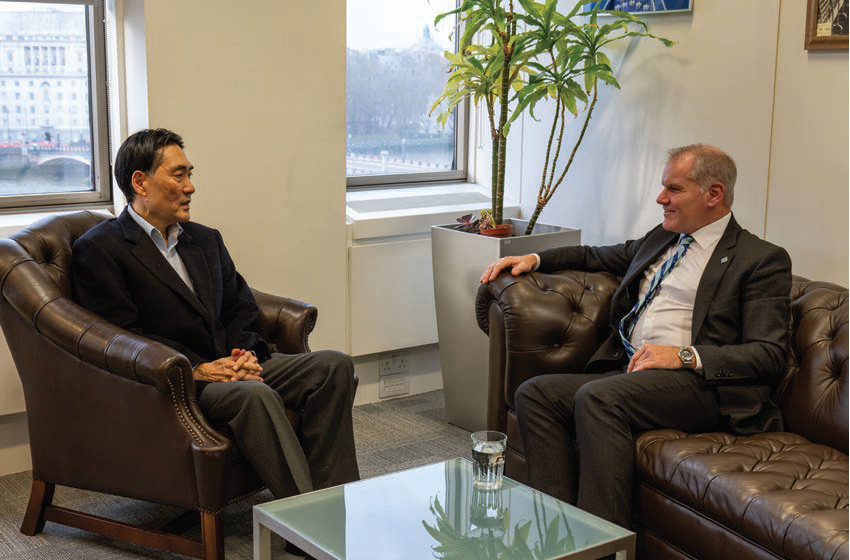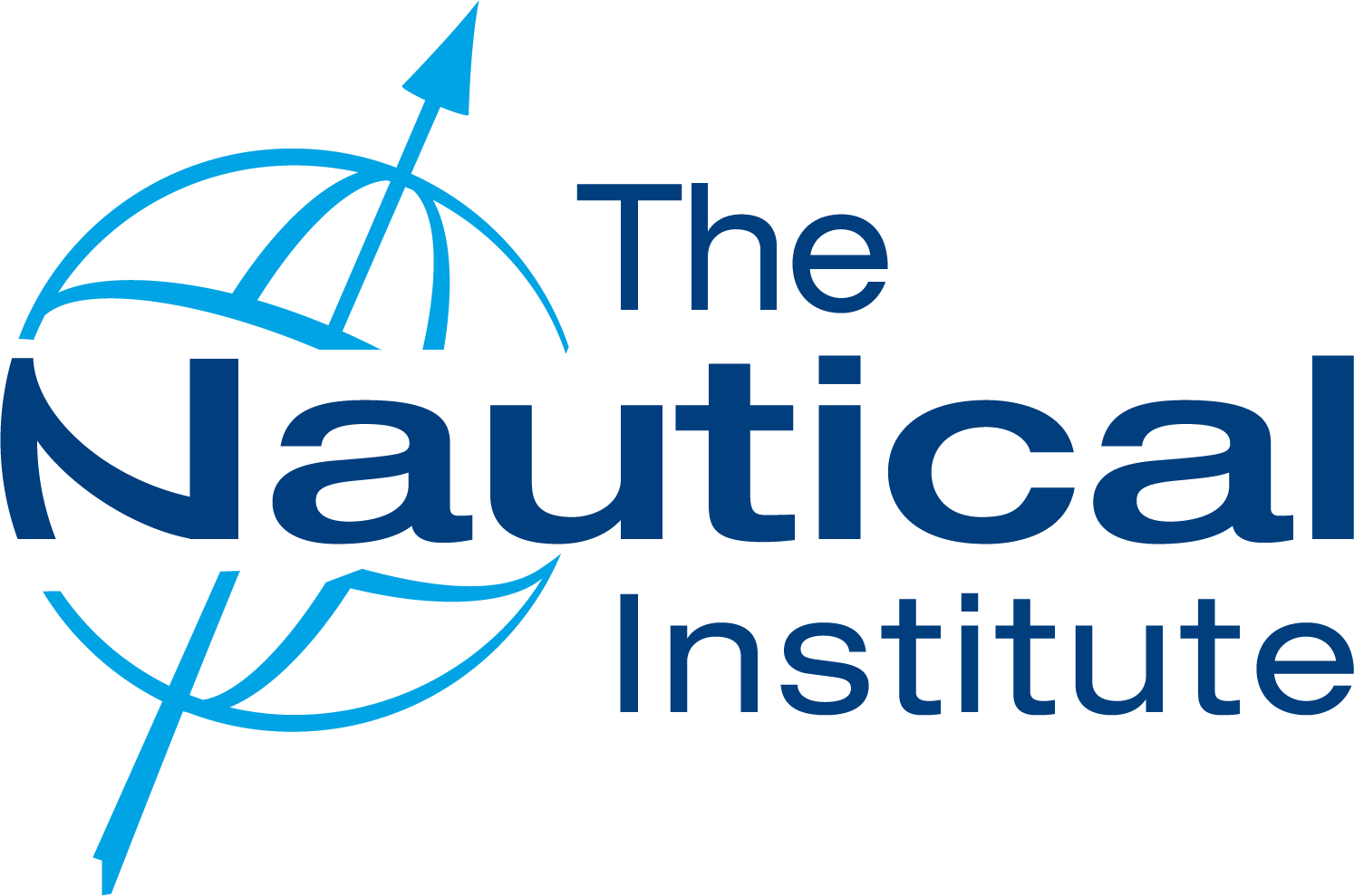Seaways Free Article: Setting priorities for maritime safety
The Nautical Institute talks to Mr Hiroyuki Yamada, Director of the IMO’s Maritime Safety Division, about maritime security, MASS, alternative fuels, cyber security and more
On 19 December 2024, Captain Chris O’Flaherty AFNI, The Nautical Institute’s representative at the IMO, sat down with Hiroyuki Yamada to discuss the maritime safety work of the IMO.
What is your priority here at the IMO?
Greenhouse gas reduction from shipping is the highest policy issue. The IMO has the strategy to deliver this such that by 2050 emissions should be at net zero. We have already delivered amendments to MARPOL Annex VI for short term measures, including the Energy Efficiency Existing Ship Index, or EEXI, and Carbon Intensity Indicator, or CII, which became mandatory in 2023. The next step is the mid-term measures, including technical and economic measures – the extraordinary session of the Marine Environment Protection Committee (MEPC) in October 2025 is expected to adopt further amendments to MARPOL Annex VI to implement this significant step.
What do you see as the key safety issues in relation to GHG reduction over the next 10 to 20 years?
The direct impact on shipping safety from the greenhouse gas reduction measures will be the introduction of new fuels such as ammonia or hydrogen. This makes GHG safety one of our highest agenda items. The Maritime Safety Committee (MSC) has a dedicated working group considering safety issues of alternative fuels and other new technologies, which has been analysing the gaps in current regulations, and we are working on how to overcome those gaps.
The Sub-Committee on the Carriage of Cargoes and Containers has already dealt with alternative fuels under the International Code for the Construction and Equipment of Ships Carrying Liquefied Gases in Bulk (the IGC Code), together with gas fuels under the International Code of Safety for Ships Using Gases or Other Lowflashpoint Fuels (the IGF Code). Since the IMO also needs to cater for alternative fuels which may be toxic to the environment, a fast-track approach for these amendments was adopted at MSC 109 in December 2024. Normally we have to wait for four years before amendments come into force, but in the case of these fuels, such as ammonia, the recent amendments to IGC will enter force in 2026 through a mandatory instrument. MSC has already developed interim guidelines for fuel cells and methyl/ethyl-alcohol as well as ammonia fuels. Other fuels will be considered at MSC 110 in June 2025, and it is noted that nuclear propulsion may be an option for reducing GHG emissions.

There are a lot of alternative fuels out there. Do any really worry you?
The principle is that we, at the IMO, should be neutral to all these fuels or new technologies, so we do not have any preference. But there are differences in the progress of some fuels, in particular from the safety point of view, and also availability. The important thing is how these alternative fuels will reduce carbon intensity, and that the IMO develops guidance for the safe use of such alternative fuels or new technologies for both ships and seafarers.
Are there other safety challenges you see facing shipping over the next few years?
There are many challenges and opportunities, such as digitalisation and automation technology as well as more satellite systems. One such area is the development of the Maritime Autonomous Surface Ships (MASS) code. This is especially challenging because normally we develop rules and regulations based on accidents or incidents, but in the case of MASS we have had to take a different approach. There are many projects in the world using autonomous technology, and so we have used the goal-based approach to develop a non-mandatory code. It is very comprehensive, covering all safety areas, stipulated in SOLAS, Colregs and other instruments, as well as search and rescue, facilitation and legal issues. Due to its complexity, MSC 109 decided to defer adoption of the non-mandatory MASS code until 2026.
Following this delay, do you think there is a possibility of MASS ships over 500 tons on international voyages appearing before the code has even been finalised?
Yes, I assume so. Already, there are several ships using autonomous technologies on domestic and coastal voyages. Even though they are currently quite limited, an administration can approve such a ship using ‘equivalent clause’ in SOLAS or relevant instruments. If they are satisfied with its safety, they can issue the required exemption certificates. For deeper ocean voyages, shipowners would look at commercial viability, including the GHG reduction potential of such vessels, although currently it will be very difficult to have a completely autonomous ship without a crew or seafarers.
There have been some calls for the revision of the Colregs, including changes to accommodate autonomous shipping. Do you foresee any revision?
At this moment, there is no specific proposal to amend the Colregs. The draft non-mandatory MASS code is based on existing mandatory instruments, which are also the basis for digitalisation and autonomous technology developments. After the adoption of the non-mandatory MASS code, there will be an experience building phase for a few years, after which the Maritime Safety Committee may find a need to revisit certain existing mandatory instruments such as SOLAS or Colregs.
Can you outline some of your other key issues at present?
I would like to mention the IMO’s Goal Based Standards, which have been used to ensure that we have the right regulations in IMO’s mandatory instruments by establishing a structure of tiered requirements. Industry standards and practices can be associated with those mandatory requirements. Twenty years ago, the IMO’s requirements used to be prescriptive regulations, whereas the goal-based approach provides a more logical structure as a basis for ship safety. Using goalbased standards, we can now verify the detailed rules of classification societies. For example, a suite of amendments to SOLAS for goal-based ship construction standards for bulk carriers and oil tankers entered into force in 2012. Since then, the IMO has continuously audited the International Association of Classification Societies Common Structural Rules (CSR) on bulk carriers and tankers.
"Our most important work is to protect seafarers. My key request to seafarers is to enhance their own competencies."
Do you think the STCW review will see training institutions writing the detail and the IMO just setting the goal-based standards?
The current STCW is already goal-based. The ongoing comprehensive review of STCW will see amendments to the Convention and Code, addressing needs emanating from new developments in terms of technology, digitalisation and alternative fuels, subsequent to the Manila Amendments of 2010. This, of course, includes re-skilling and re-educating seafarers, as well as cooperation with training institutions, maritime academies or universities.
Several teams in my division are dedicated to addressing the human element by developing and implementing both new and existing requirements to ensure the safe, secure, and environmentally sound operation of ships, from different perspectives including key areas such as ship design, operational safety and training of seafarers.
From the human side, seafarer safety, including physical and mental health issues, should be the highest priority. Seafarers also need to have updated knowledge and experience of new technologies including digitalisation and automation. Automation is already on the bridge, and this is an area in which I think the new generation has a distinct advantage over people like me. My division has undertaken various initiatives to enhance the wellbeing, safety and working conditions of maritime professionals, often in cooperation with interested Member States and international organisations and I would particularly welcome the contributions from The Nautical Institute.
Where do you see the role of the Maritime Safety Division in cyber security?
Cyber security can be considered as a security issue, and it is also related to safety management. The International Safety Management (ISM) Code gives an overall structure to addressing all manner of risks to the ship and its crew, including security – which includes cyber security. We revised the cyber security risk management guidelines at MSC 108 in May 2024. It is now up to shipowners to conduct their risk assessments in order to apply our guidelines to their own systems through their own concrete measures. The Maritime Safety Committee has agreed to develop further cyber security standards, which will be considered at the next session.
In respect of maritime security, what do you see as the role of the IMO versus the role of the UN in New York?
Security and safety for shipping and for seafarers is, of course, a high priority here. For more than 10 years the main concern was pirates, but now the attacks in the Red Sea have become our focus. We condemn all attacks, such as that on the Galaxy Leader, whose seafarers are still being held hostage. On 18 May 2024 the MSC adopted a resolution to condemn the Houthi attacks and we continue to urge member states and ship owners to take a necessarily cautious approach in the Red Sea. Our regulations cannot deal with such attacks – it is an issue for the military to deal with. We at the IMO can be a platform for the exchange of views and information between member states, industry and individuals, and we can also help through collaboration, cooperation and specific projects. We collect data on attacks, which we submit to the UN Security Council. In early 2024, the IMO Secretary General, Arsenio Dominguez, remotely attended the UN Security Council meeting.
At MSC 109 the update on the Formal Safety Assessment process valued a seafarer’s life at US$4.35 million. What do you feel is the right balance between mitigation costs and seafarers’ lives?
We must not become fixed on the figure. This figure is used as an example when calculating the costs of introduction of new safety regulations. This sum can be applied across ship types such as tankers, bulkers, containers or passenger ships, but is not used rigidly. It gives the committee a baseline for cost-benefit analysis which they may end up taking into account. The previous Formal Safety Assessment used a figure of US$3 million, so the increase is not just due to inflation.
What can seafarers do to enhance their own safety?
Our most important work is to protect seafarers. My key request to seafarers is to enhance their own competencies. The ultimate purpose of training is to protect them, and with the emergence of new technologies it is important that seafarers update their own knowledge. There is a great deal of very good guidance on this, including through the IMO’s public website where there are many e-learning courses. There are also links to other projects, in particular to GHG related subjects. We also have many technical cooperation activities and capacity building activities to build support for seafarers.
Where would you like The Nautical Institute to focus our help to the IMO in the delivery of safety for seafarers?
We appreciate the contribution of The Nautical Institute, as well as that from ship owners’ associations and labour organisations. We need this input to bring the direct voice from seafarers into our committees. Being the voice of seafarers is where The Nautical Institute can provide the best support to the IMO.
Editor’s note: the IMO’s resource centre for seafarers can be found here.
Mr Hiroyuki Yamada graduated from the University of Tokyo in 1985, having studied naval architecture. He then joined the Ministry of Transport in Japan as part of their maritime safety and marine environment team, including working in the Japanese Embassy in London between 1997 and 2000 as a delegate at the IMO. In 2005 he joined the IMO secretariat, where he started in the Maritime Safety division as a technical officer. Between 2018 and 2021 he served as Director of the Marine Environment Division, before running the Conference Division during the emergence from Covid. In 2024 he was appointed as Director, Maritime Safety Division.
